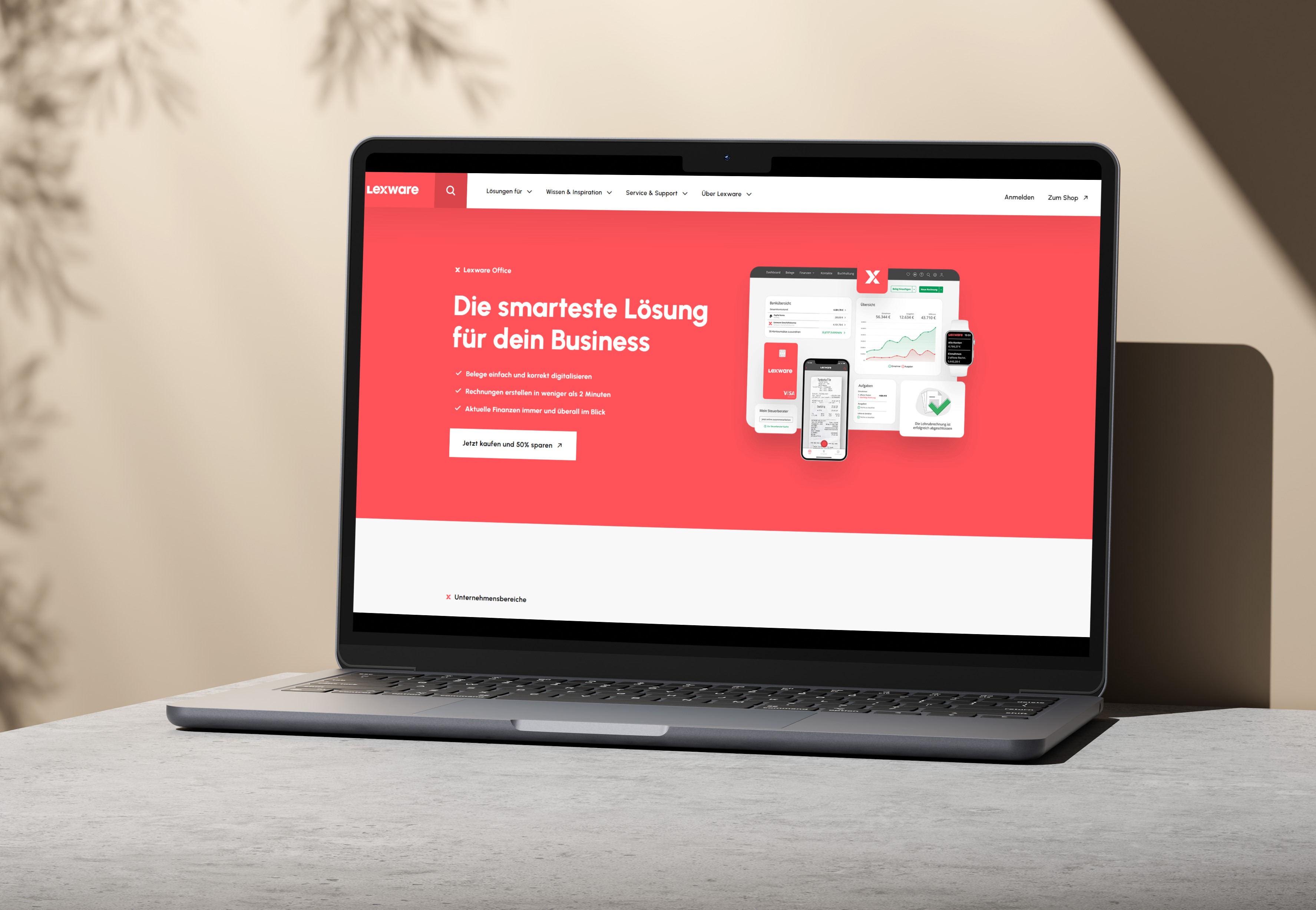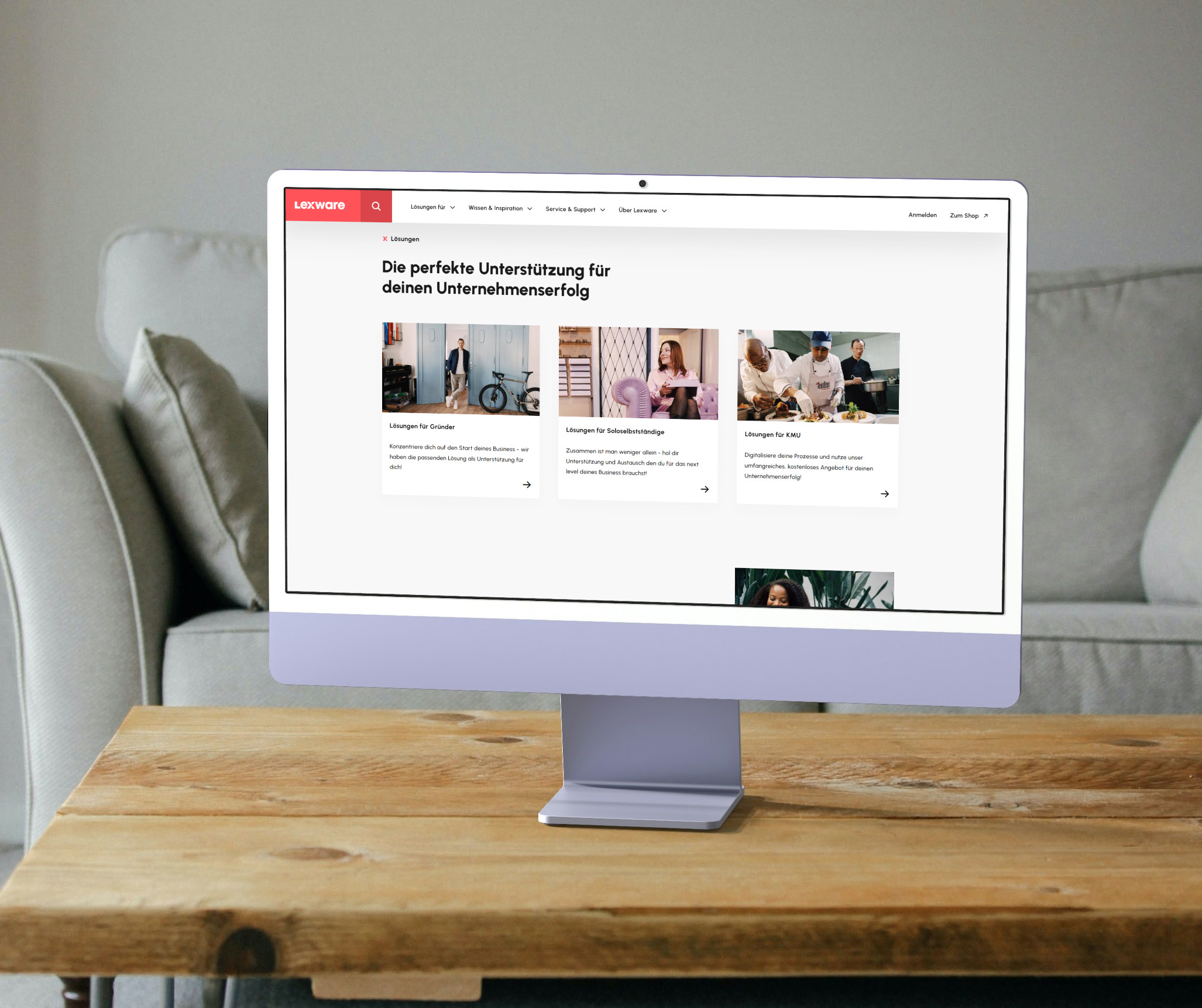Project shortcuts
We have been looking after the Lexware website for over 12 years and enjoy the trust of our customers. During this time, our development team has developed into a well-coordinated and experienced partner that not only provides Lexware with technical support, but also with advice. In the current project, our task was to adapt Lexware's website to its new corporate design. In doing so, we created a dynamic, fresh web design that appeals to a younger target group in particular and presents the products and services in a modern way. By simplifying the site structure and creating a clear design, we help users to find products more easily. We successfully used our expertise in TYPO3 and front-end development with HTML, CSS and Vue to rebrush the site.
Design requirements
Dynamic and modern web design
The new design should appear fresher and more dynamic in order to appeal to a younger target group in particular and to present the products and services offered by Lexware in a contemporary way.
Clarity and simplicity for customers
The existing website structure was to be simplified to enable user-friendly navigation and better support the target groups in their search for relevant content and products.
Consistency for editors
Clearer design guidelines should be created to support editors in creating content and prevent “uncontrolled growth” in the page structure.
Procedure
-
Phase 1: Project initialization
- Presentation of the new brand guidelines, design library and initial drafts by the client and external UX designer.
- Cataloging of all relevant website components and content modules that need to be considered in the rebrush.
- Prioritization of the components and modules together with the client using a story map.
Creation of backlog items for structured implementation.
-
Phase 2: Development/implementation
- Processing the tickets created in Jira.
- Continuous coordination with the customer in case of queries and for necessary adjustments.
- Ongoing detailing and refinement of tickets to ensure precise implementation.
- Regular review and adjustment of the project timeline based on progress.
- Finalization and coordination of the go-live scope.
-
Phase 3: Acceptance and bug fixing/finishing
- This step was carried out in parallel with the ongoing development phase in order to save time and integrate prompt feedback.
-
Phase 4: Go-Live
- Implementation of a content freeze to prevent editorial changes by the customer before the launch.
- Final systematic check of the website.
- Rollout of the new website.
Interested in a website redesign?
Contact us now for a no-obligation consultation and let's take your website to the next level together!

